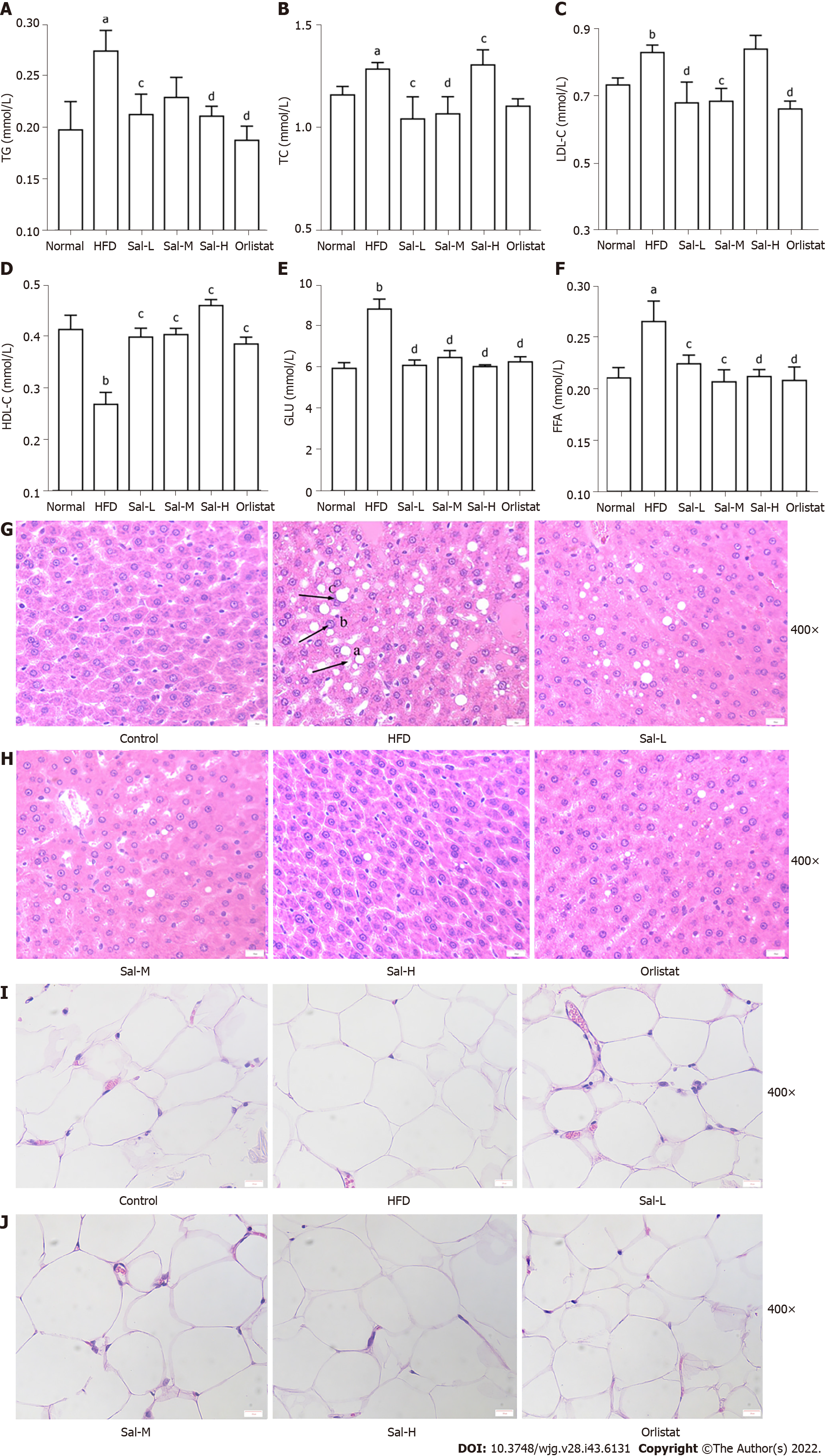Copyright
©The Author(s) 2022.
World J Gastroenterol. Nov 21, 2022; 28(43): 6131-6156
Published online Nov 21, 2022. doi: 10.3748/wjg.v28.i43.6131
Published online Nov 21, 2022. doi: 10.3748/wjg.v28.i43.6131
Figure 4 Effects of Salvia miltiorrhiza on serum lipid profiles, glucose, free fatty acid levels, and histopathological changes of the liver and adipose tissue in HFD-fed rats.
A-D: Serum triglyceride, total cholesterol, low-density lipoprotein, and high-density lipoprotein levels; E: Serum glucose level; F: Serum free fatty acid level; G and H: Representative images of hematoxylin-and eosin-stained (H&E) sections of liver tissue (400 ×) in the six groups (a: Lipid droplet accumulation; b: Punctate necrosis of hepatocytes with inflammatory cell infiltration; c: Balloon-like changes) (Scale bars: 20 µm); I and J: Representative images of H&E sections of adipose tissue (400 ×) in the six groups (Scale bars: 20 µm). Significance between groups was calculated using one-way ANOVA followed by Duncan’s multiple comparison test. Data are shown as the mean ± SE. aP < 0.05, bP < 0.01 vs control group; cP < 0.05, dP < 0.01 vs HFD group. Error bars represent standard error.
- Citation: Ai ZL, Zhang X, Ge W, Zhong YB, Wang HY, Zuo ZY, Liu DY. Salvia miltiorrhiza extract may exert an anti-obesity effect in rats with high-fat diet-induced obesity by modulating gut microbiome and lipid metabolism. World J Gastroenterol 2022; 28(43): 6131-6156
- URL: https://www.wjgnet.com/1007-9327/full/v28/i43/6131.htm
- DOI: https://dx.doi.org/10.3748/wjg.v28.i43.6131









